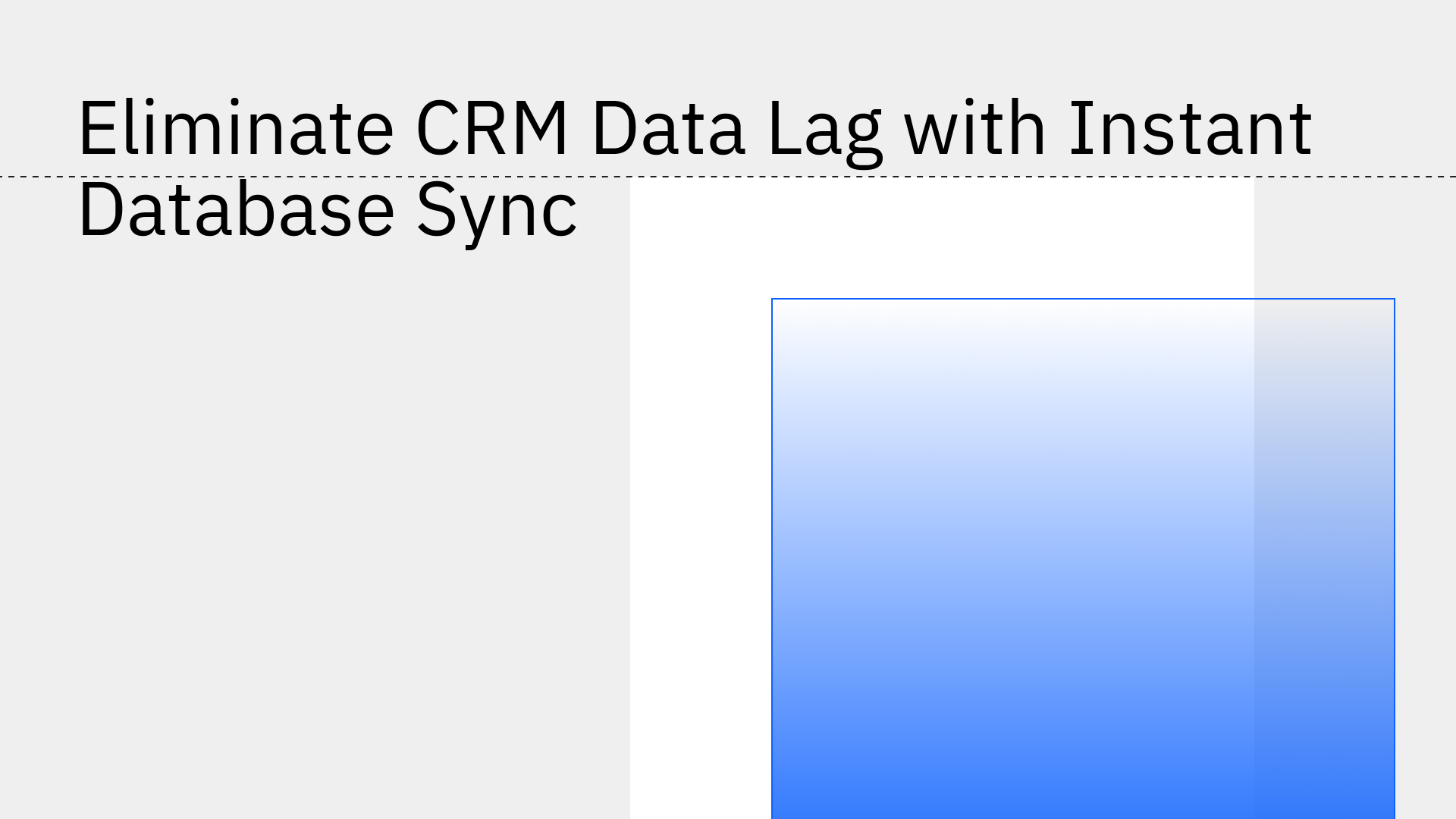

In today's fast-paced business world, having up-to-date information is crucial. However, many companies struggle with CRM data lag, a delay where the information in your Customer Relationship Management (CRM) system is out of sync with your other business databases.
This gap means your teams are working with outdated data, which can undermine sales efforts, disrupt marketing campaigns, and lead to poor customer service. The solution is an instant database sync that ensures your data is fresh, accurate, and available right when you need it.
CRM data lag is more than just a minor annoyance; it’s a significant problem with real costs. It happens when there's a discrepancy between the information in your central database and what your teams see in the CRM. Without a solid process for CRM Integration, businesses face lost revenue, wasted time, and frustrated customers.
Inaccurate or old data has a direct impact on your bottom line. According to a 2025 report from Validity, 37% of organizations lose revenue due to poor data quality, and on average, companies lose 16 sales deals every quarter because of it [1]. The damage doesn't stop there. Hidden costs pile up from failed marketing campaigns that target the wrong audience and even compliance risks from mismanaged data [2]. When your insights are based on old information, it can also undermine product innovation and devalue your research investments [3].
Data lag creates productivity nightmares for your teams. Instead of focusing on customers, sales and marketing staff get bogged down in manual data cleanup and verification [4]. The problem is widespread: the Validity report also found that employees spend an average of 13 hours per week just searching for information they can trust within their CRM [1]. That's valuable time that could be spent on growing the business.
Nothing damages customer trust faster than a bad experience rooted in poor data. This happens when you send "new customer" promotions to loyal clients or when a support agent doesn't have the latest information on a customer's issue. These sync failures can slow down lead response times and cause customers to unsubscribe [4]. In contrast, having real-time data allows for immediate and relevant customer interactions, which is essential for sales success in today's market [5].
Understanding why data syncs fail is the first step toward fixing the problem. The issues are often technical and rooted in outdated methods of connecting systems. To learn more about this, you can check out our ultimate guide on how to sync your CRM with your database.
Connecting different systems is complex. Data can be stored in different formats, and conflicts can arise when information is updated in two places at once. In fact, 73% of B2B companies struggle with mismatched data between their systems [6]. Old-school methods like nightly data dumps or custom-coded APIs are often slow, break easily, and are a headache to maintain.
"Stale data" is information that is simply out of date but still lives in your systems. An astonishing 55% of an organization's data is estimated to be stale, which not only slows down systems but also drives up costs and risks [7]. Making business decisions based on this old data can lead to major mistakes. A famous example is Nokia, whose failure to adapt was partly due to relying on outdated market intelligence [8].
Stacksync is the modern solution built to eliminate these data problems. We provide instant, two-way database integration CRM connections that ensure your data is always consistent and reliable. By focusing on speed and accuracy, we enable the real-time data synchronization that modern businesses depend on.
Stacksync is the modern solution built to eliminate these data problems. We provide instant, two-way database integration CRM connections that ensure your data is always consistent and reliable. By focusing on speed and accuracy, we enable the real-time data synchronization that modern businesses depend on.
Stacksync is built for true Two-Way Real-Time Data Sync Between CRM and ERP Systems and databases, ensuring any change made in one system is reflected in the other in milliseconds.
Our no-code setup means you can connect your systems without writing complex code, cutting integration timelines by over 90%. Instead of spending months on a custom project, you can have a production-ready sync running in minutes. The platform is also smart; it manages API requests to avoid overloading your systems and has a dashboard to catch any issues before they cause "silent failures" or data corruption.
To achieve a seamless integration between your database and CRM, you need a solution with the right features. Here’s what makes Stacksync stand out:
The negative effects of CRM data lag from lost deals to frustrated teams are a major roadblock to growth. Old integration methods are too slow and unreliable for today's business needs.
Stacksync provides the definitive solution for creating a single source of truth across your organization. We offer instant, dependable, and scalable database and CRM integration to give your teams the accurate, real-time data they need to excel.
Ready to put an end to data lag? Visit the Stacksync | Data Sync & Workflow Automation Platform to learn how we can solve your data challenges today.